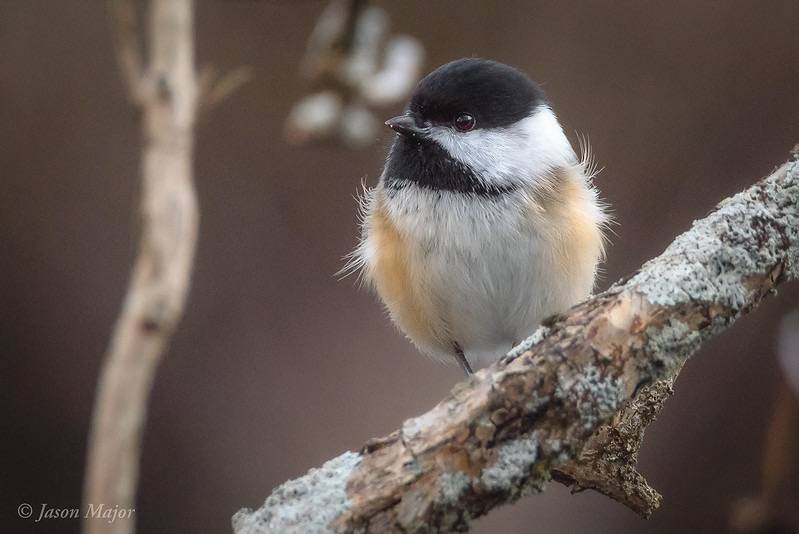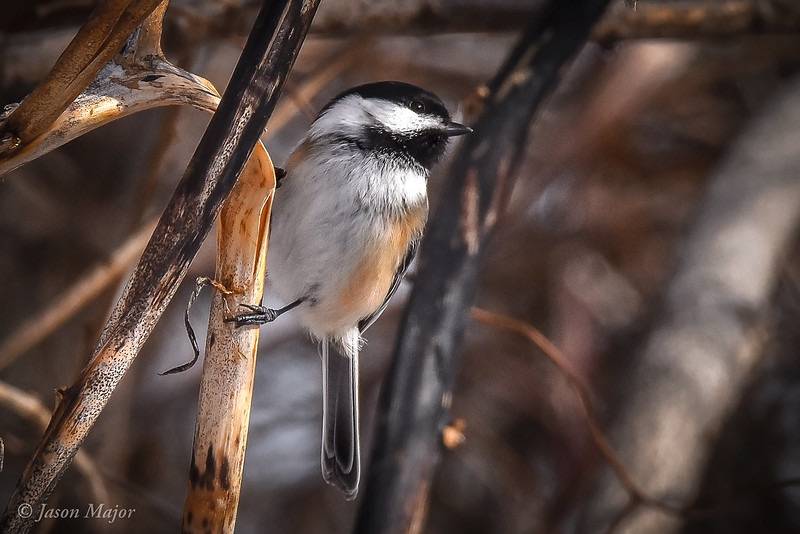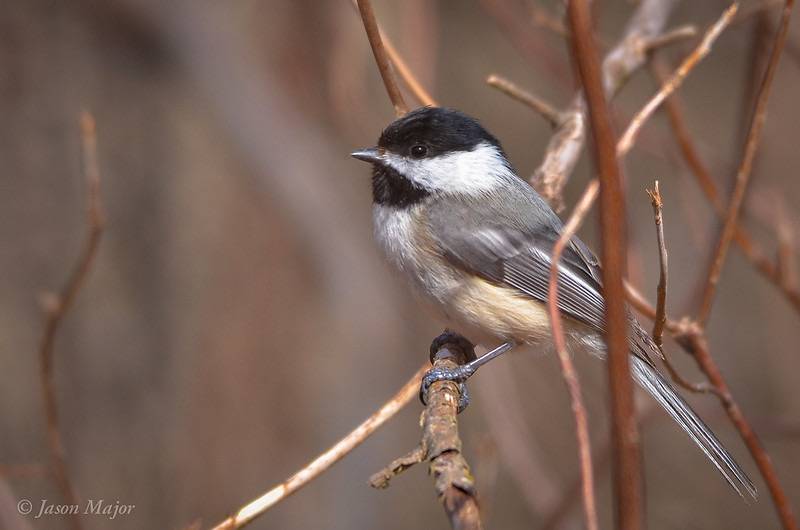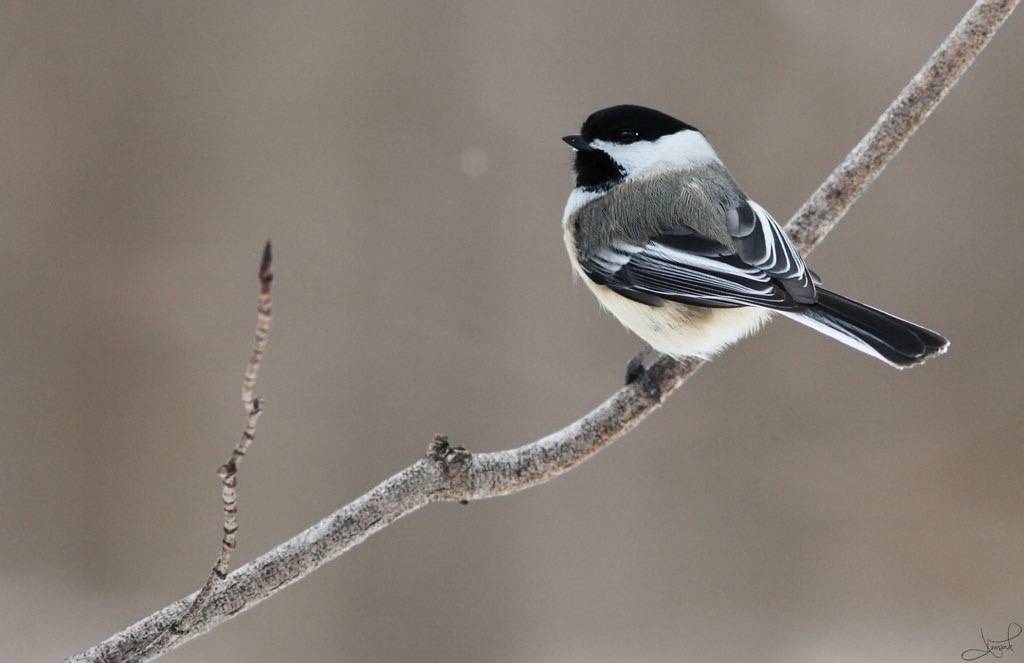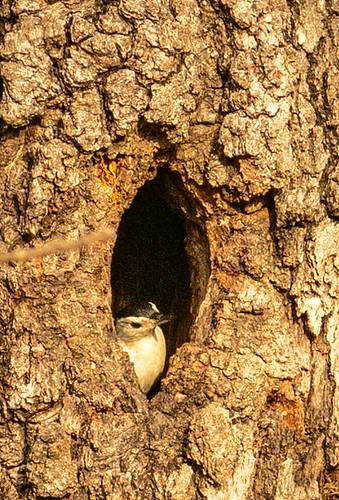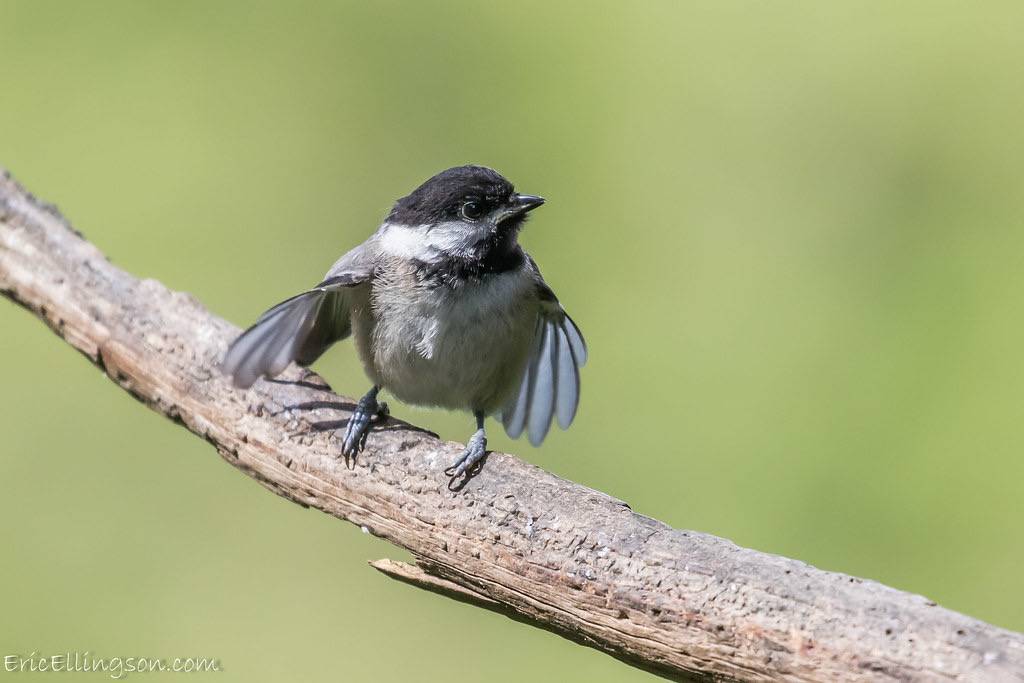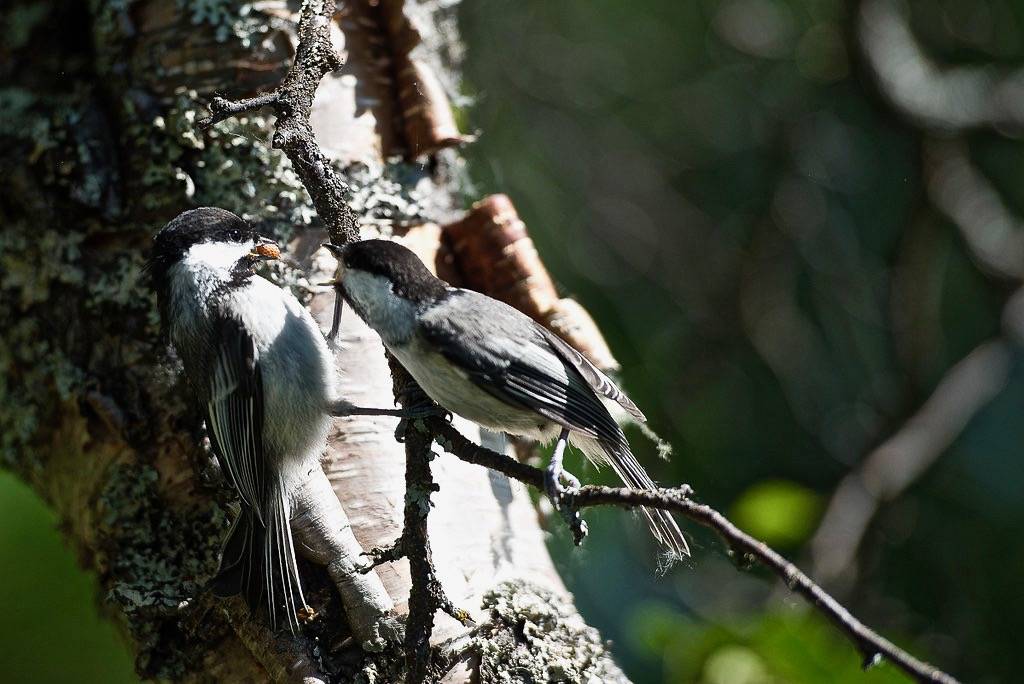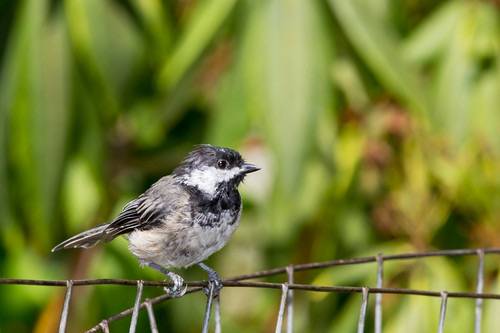Black-capped Chickadee
Park visitors who maintain feeders should easily recognize this active bird. The Black-capped Chickadee is non-migratory and its familiar chickadee-dee-dee call can be heard throughout the year at Salter Grove. It is more often heard before it is seen even when branches have lost all leaves.
Chickadees are not at all timid and will fly in to investigate a birdwatcher making "pishing" sounds. Outside the breeding season, they foraging alongside other species such as Downy Woodpecker, Tufted Titmouse, White-breasted Nuthatch, White-throated Sparrow, and various migrating warblers.
The Black-capped Chickadee breeds in the deciduous and mixed forests of Alaska, the southern half of Canada and the northern half of the United States. During the breeding season, chickadees glean twigs and branches for insects and feed mostly on caterpillars. It isn't until winter that plant matter becomes important in its diet, including the waxy fruits of poison ivy and small bayberry.
Black-capped Chickadees are able to stay near their breeding grounds through the winter months because they have the ability to lower their body temperature (from 108° to 86°F!) to conserve energy expenditures on very cold days. It would not be surprising if other over-wintering species are shown to have this ability as well.
Chickadees readily supplement their winter diet with the high-energy beef suet and peanut butter offered at feeders. Additionally, they are capable of hiding abundant food, such as sunflower seeds from feeders, for consumption at a later date.
For more information:
https://www.allaboutbirds.org/guide/Black-capped_Chickadee
https://www.audubon.org/field-guide/bird/black-capped-chickadee
https://en.wikipedia.org/wiki/Black-capped_chickadee
http://www.biokids.umich.edu/critters/Parus_atricapillus/
https://web.stanford.edu/group/stanfordbirds/text/essays/Temperature_Regulation.html

